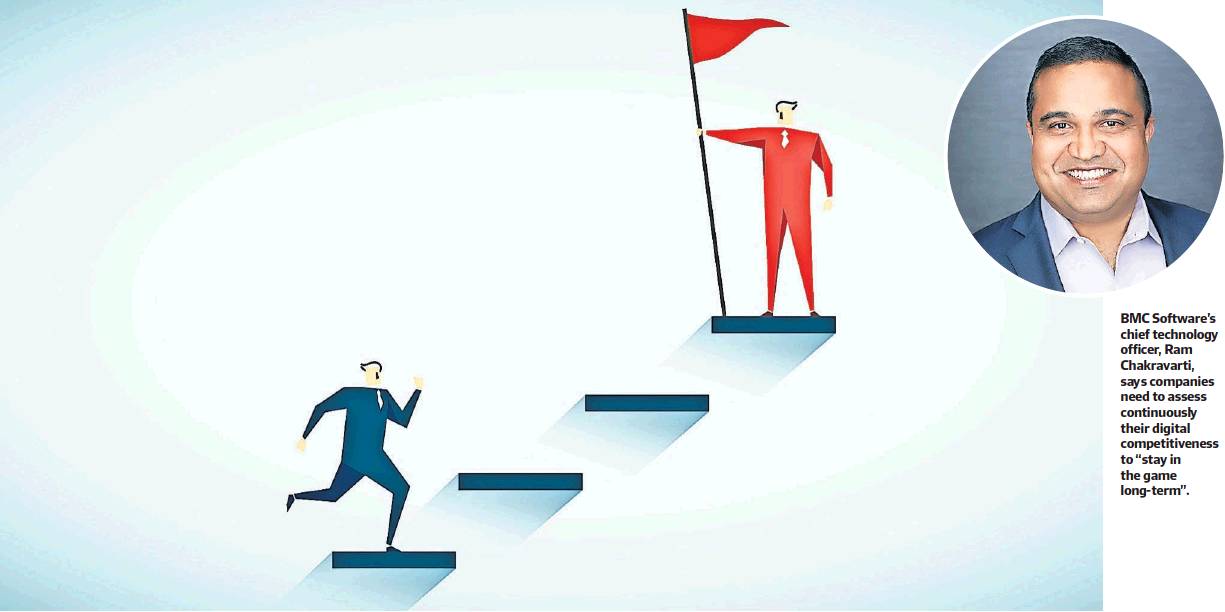Driving automation to the next level
Marrying artificial intelligence (AI) and machinelearning tools with robotic process automation, ‘‘hyperautomation’’ extends automation beyond individual processes and is set to underpin the next stage of digital transformation.
Gartner ranked hyperautomation number one in its list of top 10 strategic technology trends for 2020, defining it as ‘‘an effective combination of complementary sets of tools that can integrate functional and process silos to automate and augment business processes’’.
The result is pervasive process automation that can extend through an organisation to automate virtually any repetitive task performed by people, including the ability to dynamically discover and automate business processes.
While robotic process automation is designed to automate existing manual processes, hyperautomation extends this concept by incorporating process discovery, process mining, intelligent business process management systems, low-code and business rules engines.
The goal is to ensure that automated processes are not simply digitised facsimiles of the original manual process, but that these processes are also optimised or even transformed to ensure they best meet the needs of the business.
While hyperautomation takes automation to the next level, the idea is not for organisations to run on autopilot.
Rather than replace people, hyperautomation sees people move to new roles which require human judgment in order to support the autonomous systems that run the business. As technology takes on the menial and repetitive tasks – such as managing password resets – employees can shift to higher-value responsibilities.
Hyperautomation is part of an ‘‘automation everywhere’’ mantra which extends to operations automation, offering preemptive and reactive remediation capabilities which are enabled by observable insights and automated actions.
AI is at the heart of automation everywhere, spanning AI-enabled process automation, collaborative AI within enterprise service management and AIOps for action based on ‘‘observability’’ – the ability to infer internal states of a system based on external outputs. AIOps-enabled observable insights can extend to auto-remediation and self-healing.
Automation everywhere is a key tenet of the autonomous digital enterprise (ADE) – a concept which embraces intelligent, tech-enabled systems across every facet of the business. This intelligent interconnected technology creates value across internal functions as well as interactions with an external ecosystem of partners, says BMC Software chief technology officer Ram Chakravarti.
Along with automation everywhere, the autonomous digital enterprise is also focused on a strong customer experience, enterprise DevOps, data-backed business outcomes and adaptive cyber security.
Underpinning BMC’s ADE technology foundation is the BMC Helix solution suite, which is available on AWS’s Asia Pacific (Sydney) Region, allowing customers to meet stringent security requirements and address local compliance regulations.
ADE is anchored in business agility, customercentricity and actionable insights. This ensures organisations are able to simultaneously run their business and reinvent themselves to meet new challenges.
Beyond the technology, ADE’s major operating model characteristics include digital business domains, optimised technology buying, an evolved role of centralised IT, tech-savvy corporate functions and embracing innovation ecosystems in a sharing economy.
ADE is an evolution of digital transformation, characterised by a growth mindset and change orientation, Chakravarti says. It is not a static endpoint but rather a framework which helps organisations make rapid pivots in the face of macro changes or externalities.
‘‘More than simply automating processes, ADE can rapidly adjust an organisation’s strategic priorities and investments in response to global events, market dynamics and customer expectations,’’ he says.
‘‘This makes it a powerful tool for organisations looking to cope with the unprecedented challenges thrown up by the COVID-19 pandemic.’’
BMC helps organisations identify ways to effectively adjust and execute their digital transformation road maps, prioritising the pillars of an ADE which increase digital competitiveness and evolve business models to offer better options and value for customers.
‘‘Many companies from various industries are already adopting the core tenets of an ADE into their digital transformation efforts,’’ Chakravarti notes. ‘‘They know they need to continuously assess their digital competitiveness to not only rebound but stay in the game long term.’’
The sectors that have been quickest to recognise the benefits of becoming an ADE are the ones facing the greatest threat from digital upstarts and hyperscalers.
The financial sector is leading the way, Chakravarti says, along with the retail sector hit hard by ‘‘the behemoth that is Amazon’’ – forcing them to evolve more rapidly than they had foreseen.
‘‘Sectors which have not yet faced this kind of imminent existential threat have been a little more glacial in their pace of change, but the writing is on the wall in every sector,’’ he says.
‘‘Rather than wait until the wolf is at the door, organisations need to be thinking about how the ideals of an ADE can help them be the disruptor in their sector rather than the disrupted.’’
